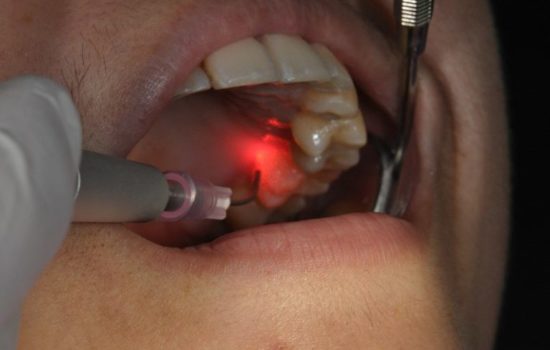
Laser Dentistry Uses, Safety Features, and Benefits
Laser dentistry is a modern technique that has revolutionised the field of dentistry. It uses highly concentrated beams of light to perform a wide range of dental procedures. This technology has gained popularity in recent years due to its many benefits and safety features. In this blog, we will discuss the uses, safety features, and benefits of laser dentistry when used by an experienced dental team. This is gaining popularity for dental treatment for some good reasons.
Uses of Laser Dentistry
Laser dentistry is used in a variety of dental procedures, including:
- Teeth Whitening: Laser technology is used to speed up the teeth whitening process by activating the whitening gel that is applied to the teeth.
- Gum Contouring: Laser technology can reshape the gums, improving the appearance of a “gummy” smile.
- Cavity Detection: Laser technology can detect cavities early on, allowing for more conservative treatment options.
- Tooth Sensitivity: Lasers can be used to seal the tiny tubules in the teeth that cause sensitivity, providing relief for patients.
- Biopsies: Lasers can be used to remove small pieces of tissue for biopsy, without the need for invasive surgery.
- Root Canal Therapy: Lasers can be used to remove infected tissue during root canal therapy, reducing the need for drilling and reducing the risk of complications.
- Treatment of Gum Disease: Lasers can be used to remove bacteria and infected tissue in the gums, promoting healing and reducing inflammation.
Safety Features Of Laser Dentistry
- Precision: Laser dentistry is a precise method of treatment. It allows dentists to target the specific area that needs treatment, without affecting the surrounding tissues. This reduces the risk of damage to healthy tissues and minimises the need for invasive procedures.
- Reduced Bleeding: Another safety feature of laser dentistry is that it reduces bleeding during procedures. This is because the laser energy cauterises the blood vessels as it cuts through the tissue, reducing the amount of bleeding that occurs. This also means that the patient’s recovery time is faster, as there is less blood loss and inflammation.
- Sterilisation: Laser dentistry is a sterilising process. The laser beam destroys the bacteria and viruses present in the treated area, reducing the risk of infection. This is particularly useful for treating gum disease, as it helps to remove the bacteria that cause the disease, without damaging the surrounding tissues.
- Less Anaesthesia: Laser dentistry requires less anaesthesia than traditional procedures. This is because the laser beam produces a numbing effect as it cuts through the tissue, reducing the need for additional anaesthesia. This is particularly useful for patients who are anxious about dental procedures, as it reduces the need for injections and other types of anaesthesia.
- Reduced Trauma: Laser dentistry is a non-invasive procedure that produces less trauma to the patient. This is because the laser beam is precise and controlled, reducing the need for incisions and other invasive procedures. This means that patients experience less pain, swelling, and discomfort during and after the procedure.
Benefits Of Laser Dentistry:
- Reduced Pain and Discomfort: Laser dentistry can reduce the need for anaesthesia, which can be a significant benefit for patients who are nervous or anxious about dental procedures. Additionally, lasers are less invasive than traditional tools, which can lead to less pain and discomfort during and after the procedure.
- Faster Healing Times: Because lasers are highly precise and do not damage surrounding tissue, patients typically experience faster healing times than with traditional dental procedures. This can be a significant benefit for patients who need to return to work or other activities quickly.
- Improved Precision: Lasers are highly precise and can target specific areas, leading to better results and reduced risk of complications. This precision can be especially beneficial in procedures like gum contouring and cavity detection, where accuracy is key.
- Reduced Risk of Infection: Because lasers can remove bacteria and infected tissue, they can reduce the risk of infection and promote healing.
- Improved Cosmetic Results: Laser dentistry can be used to reshape the gums and improve the appearance of the teeth, leading to improved cosmetic results and a more confident smile.
Conclusion
Laser dentistry is a modern technique that offers many benefits for patients who require emergency dental services. It is highly precise, safe, and can be used in a wide range of dental procedures. Its benefits include reduced pain and discomfort, faster healing times, improved precision, reduced risk of infection, and improved cosmetic results. If you are interested in learning more about laser dentistry and whether it is right for you, speak with your dentist to determine the best treatment options for your needs.
If you are considering laser dentistry for your dental needs, it is important to seek professional help. Laser dentistry requires specialised training and expertise, and not all dental professionals are trained to use this technology. Before undergoing any laser dentistry procedures, make sure to consult with a licensed and experienced dental professional who has the necessary training and certification. This will ensure that you receive safe and effective treatment and achieve the best possible outcomes for your dental health.
